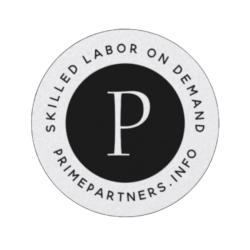Industrial Automation Electrician Interview Questions and Answers
Overview of Certifications, Educational Background, and Industry Qualifications
Required and Recommended Certifications
-
Certified Automation Professional (CAP):
- Overview: This certification is offered by the International Society of Automation (ISA) and is highly valued in the automation industry.
- Benefits: Demonstrates proficiency in automation, control systems, and related technologies.
- Preparation: Requires knowledge in automation fundamentals, design, development, testing, and implementation.
-
Electrician License:
- Overview: A state or national license that allows you to legally work as an electrician.
- Benefits: Validates your understanding of electrical systems, safety regulations, and hands-on experience.
- Preparation: Requires passing a licensing exam and fulfilling practical experience requirements.
-
Programmable Logic Controller (PLC) Certification:
- Overview: Specialized certification focusing on programming and troubleshooting PLCs.
- Benefits: Essential for roles involving automation systems that rely on PLCs.
- Preparation: Involves coursework and practical experience in programming different PLC brands (e.g., Allen-Bradley, Siemens).
Educational Background
-
Associate Degree in Electrical Engineering Technology:
- Benefits: Provides foundational knowledge in electrical theory, circuitry, and systems.
- Coursework: Includes electrical codes, safety practices, and hands-on labs.
-
Bachelor’s Degree in Electrical Engineering:
- Benefits: Offers a more in-depth understanding of electrical and electronic systems, including advanced automation technologies.
- Coursework: Covers control systems, embedded systems, and project management.
Industry Qualifications
-
Experience with Industrial Control Systems (ICS):
- Importance: Practical experience with ICS is crucial for understanding complex automation environments.
- Involves: Designing, installing, and maintaining systems that control industrial operations.
-
Knowledge of Safety Standards (e.g., NFPA 70E, OSHA):
- Importance: Ensures compliance with safety regulations and best practices in preventing electrical hazards.
Interview Questions and Answers
Technical Questions
Question 1:
What are the critical components of a PLC system, and how do they function together?
- Answer:
-
Components:
- Processor (CPU): Executes control program instructions.
- Input/Output Modules: Interfaces with field devices (sensors and actuators).
- Power Supply: Provides the necessary power for the PLC and its modules.
- Communication Interfaces: Allows PLC to connect with other systems and networks.
-
Functionality:
- Workflow: The CPU reads input data, processes logic based on the control program, and sends commands to output modules to control machinery.
- Example: In an assembly line, sensors detect object placement, the CPU processes this information, and output modules trigger conveyors or robotic arms.
-
Real-World Scenario:
- Scenario: A bottling plant uses a PLC to control filling machines. If a sensor detects a missing bottle, the PLC halts the filling process, preventing spills and waste.
- Outcome: Improved efficiency and reduced material waste.
-
Best Practices:
- Modular Design: Allows flexibility and easier troubleshooting.
- Regular Updates: Ensure firmware and software are up-to-date to prevent security vulnerabilities.
-
Pitfalls to Avoid:
- Ignoring Compatibility: Ensure modules are compatible with the PLC model.
- Overlooking Maintenance: Regularly maintain systems to avoid unexpected failures.
-
Follow-Up Points:
- Interviewer may ask: How do you ensure the reliability of PLC systems in critical applications?
-
Question 2:
Explain the role of Human-Machine Interfaces (HMIs) in industrial automation.
- Answer:
-
Role:
- User Interface: HMIs provide a graphical interface for operators to monitor and control industrial processes.
- Data Visualization: Displays real-time data and alerts for quick decision-making.
-
Example:
- Scenario: In a chemical plant, HMIs display temperature, pressure, and flow rates, allowing operators to adjust settings remotely.
- Outcome: Enhanced operator efficiency and process safety.
-
Best Practices:
- User-Friendly Design: Ensure the interface is intuitive and accessible.
- Security Measures: Implement authentication and encryption to protect against unauthorized access.
-
Pitfalls to Avoid:
- Overcomplicated Interfaces: Avoid clutter that can overwhelm users.
- Lack of Training: Provide comprehensive training to ensure operators can effectively use the HMI.
-
Follow-Up Points:
- Interviewer may ask: How do you handle HMI failures during critical operations?
-
Behavioral Questions
Question 3:
Describe a time when you had to work under pressure to complete a critical project. How did you manage the situation?
- Answer:
-
Situation:
- Context: I was part of a team tasked with upgrading the automation systems in a manufacturing plant within a tight deadline.
- Challenge: The project had to be completed without disrupting ongoing production.
-
Action:
- Prioritization: Identified critical tasks and allocated resources efficiently.
- Collaboration: Worked closely with cross-functional teams to ensure smooth transitions.
- Communication: Maintained clear communication with stakeholders regarding progress and challenges.
-
Outcome:
- Success: Completed the upgrade ahead of schedule with minimal downtime.
- Feedback: Received positive feedback for effective project management and teamwork.
-
Alternative Considerations:
- Scenario: If faced with unexpected delays, I would reassess the project plan and adjust timelines and resources as needed.
-
Best Practices:
- Time Management: Use project management tools to track progress and deadlines.
- Stress Management: Regular breaks and team support to maintain morale.
-
Follow-Up Points:
- Interviewer may ask: How do you prioritize tasks when managing multiple projects simultaneously?
-
Situational Questions
Question 4:
If a machine stops working suddenly, what steps would you take to troubleshoot and resolve the issue?
- Answer:
-
Initial Steps:
- Safety First: Ensure the machine is safely powered down and lockout/tagout (LOTO) protocols are followed.
- Visual Inspection: Check for obvious issues like loose wires or damaged components.
-
Diagnostic Approach:
- Use Tools: Employ multimeters and diagnostic software to identify electrical faults.
- Review Logs: Check PLC and HMI logs for error messages or warnings.
-
Example:
- Scenario: A conveyor belt stops mid-operation. After confirming safety, I check the motor connections and find a loose wire causing intermittent power loss.
- Outcome: Re-secure the wire, test the system, and resume operations with minimal downtime.
-
Reasoning:
- Systematic Troubleshooting: Follow a logical sequence to isolate and fix the issue.
- Documentation: Maintain records of the issue and resolution for future reference.
-
Pitfalls to Avoid:
- Skipping Steps: Avoid rushing to conclusions without thorough checks.
- Neglecting Documentation: Failing to document can lead to repeated issues.
-
Follow-Up Points:
- Interviewer may ask: Describe a situation where you had to troubleshoot a complex problem.
-
Problem-Solving Questions
Question 5:
How would you improve the energy efficiency of an existing industrial automation system?
- Answer:
-
Assessment:
- Energy Audit: Conduct a thorough audit to identify energy wastage points.
- Benchmarking: Compare current energy usage with industry standards.
-
Improvement Strategies:
- Upgrade Equipment: Replace outdated components with energy-efficient alternatives.
- Optimize Operations: Implement smart scheduling to reduce peak energy demand.
-
Example:
- Scenario: In a textile factory, I identified that motors were running at full capacity regardless of load. Implemented variable frequency drives (VFDs) to adjust motor speed based on demand.
- Outcome: Reduced energy consumption by 20% and lowered operational costs.
-
Reasoning:
- Targeted Interventions: Focus on high-impact areas for significant savings.
- Continuous Monitoring: Use IoT sensors to track and optimize energy usage in real-time.
-
Pitfalls to Avoid:
- Overlooking Small Changes: Small adjustments can lead to significant savings.
- Ignoring ROI: Ensure that investments in energy efficiency have a reasonable return on investment.
-
Follow-Up Points:
- Interviewer may ask: How do you measure the success of energy efficiency improvements?
-
This guide provides a comprehensive overview and detailed answers to potential interview questions for an Industrial Automation Electrician position. By preparing thoroughly, candidates can effectively demonstrate their technical expertise, problem-solving skills, and ability to handle real-world scenarios in the automation industry.
More Industrial Interview Guides
Explore more interview guides for Electrical positions.
Industrial Offshore Electrician Interview Guide
The Industrial Offshore Electrician Interview Guide equips job seekers with essential strategies to excel in intervie...
Industrial Electrical Foreman Interview Questions and Answers
This guide provides job seekers with a comprehensive set of Industrial Electrical Foreman interview questions and ans...
Industrial Master Electrician Interview Help
The Industrial Master Electrician Interview Help guide equips job seekers with essential knowledge and strategies to ...
Industrial Wind Turbine Electrician Interview Guide
The Industrial Wind Turbine Electrician Interview Guide is a comprehensive resource designed to prepare job seekers f...
Industrial Apprentice Electrician Interview Help
The Industrial Apprentice Electrician Interview Help guide equips job seekers with essential insights and strategies ...
Recent Articles
Check out more articles from Best Electrician Jobs about getting hired inthe electrical industry.
Best Job Board for Electricians
Discover the best job board for electricians! Boost your career with insights on salaries, training, and growth!
Improve Your Electrician Job Postings for More Applicants
Discover how to improve your electrician job postings for more applicants! Boost your career with insights on salarie...
What is the Highest Paying Electrician Role?
Discover the highest paying electrician roles and how to prepare for them. Learn about the skills and certifications ...
Industrial Electrician Careers in California
From manufacturing plants to data centers, industrial electricians play a vital role in California's economy. Discove...
Security Technician Interview Questions and Answers
Security technicians are essential in protecting our modern world. Learn what to expect in your Security Technician i...
Featured Jobs
-

- Company
- Prime Partners
- Title and Location
- Cable Technician
- Wyoming, MI
- Employment Type
- FULL_TIME
- Salary
- $25.16-$32.59/HOUR
- Team and Date
- Commercial
- Posted: 04/17/2025
-

- Company
- Prime Partners
- Title and Location
- Apprentice Electrician
- San Diego, CA
- Employment Type
- FULL_TIME
- Salary
- $24-$37/HOUR
- Team and Date
- Commercial
- Posted: 04/17/2025
-

- Company
- Prime Partners
- Title and Location
- Security Alarm Installer
- Mesa, AZ
- Employment Type
- FULL_TIME
- Salary
- $25.81-$30.68/HOUR
- Team and Date
- Commercial
- Posted: 04/17/2025
-
- Company
- Jackson Healthcare
- Title and Location
- Journeyman Electrician
- Alpharetta, GA
- Employment Type
- FULL_TIME
- Salary
- $30.6-$35.86/HOUR
- Team and Date
- Commercial
- Posted: 04/17/2025
-

- Company
- Prime Partners
- Title and Location
- Journeyman Electrician
- Gilbert, AZ
- Employment Type
- FULL_TIME
- Salary
- $40-$55/HOUR
- Team and Date
- Data Center
- Posted: 04/17/2025
-

- Company
- Prime Partners
- Title and Location
- Voice & Data Technician
- Glendale, AZ
- Employment Type
- FULL_TIME
- Salary
- $23-$35/HOUR
- Team and Date
- Commercial
- Posted: 04/17/2025
Best Electrician Jobs
Ready to get started?
Stop worring about manpower. And get back to what you do best.
Best Electrician Jobs is for Everyone
At Best Electrician Jobs, we are dedicated to fostering an inclusive environment that values diverse perspectives, ideas, and backgrounds. We strive to ensure equal employment opportunities for all applicants and employees. Our commitment is to prevent discrimination based on any protected characteristic, including race, color, ancestry, national origin, religion, creed, age, disability (mental and physical), sex, gender, sexual orientation, gender identity, gender expression, medical condition, genetic information, family care or medical leave status, marital status, domestic partner status, and military and veteran status.
We uphold all characteristics protected by US federal, state, or local laws, as well as the laws of the country or jurisdiction where you work.
 Best Electrician Jobs
Best Electrician Jobs